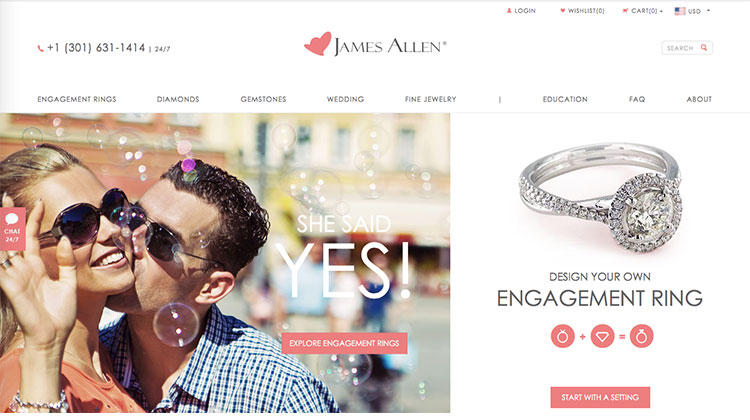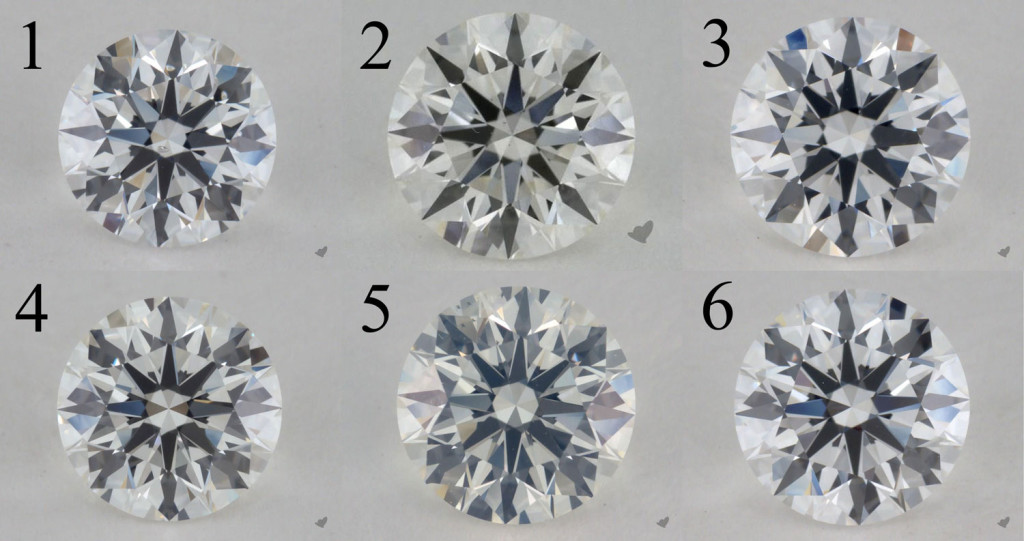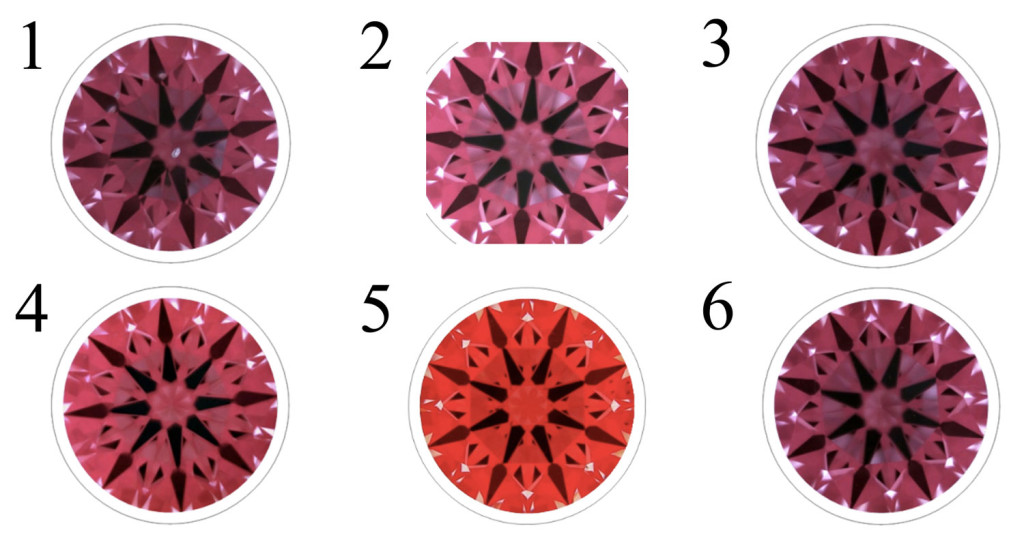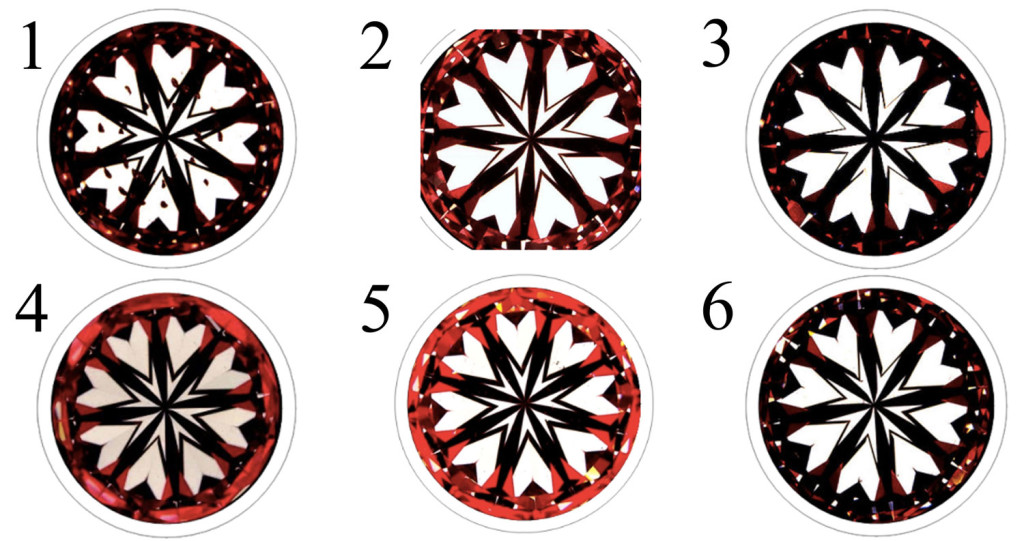
James Allen is actually a brand and not a company. JamesAllen.com was launched in 2006 and has since grown to become the second most popular online diamond vendor after Blue Nile. The company behind the brand is R2net LLC, founded by Oded Edelman in partnership with James Allen Schultz. R2net also operates a B2B platform that connects some of the largest diamond manufacturers and jewelry retailers. R2net is headquartered in the New York diamond district and James Allen has a customer service center in Fredrick, Maryland. The unique position of R2net allows JamesAllen.com to operate a business model where they don’t keep an inventory on most of their diamonds but also do not drop-ship.
*On August 24, 2017 Signet Jewelers announced the acquisition of JamesAllen.com and R2Net.
A drop-ship business model means that a product gets shipped out to you directly from the company’s suppliers without going through them first. For diamonds, this business model is bad for the consumer because it means an inconsistent eye-clean policy and increased potential for mix-ups and other quality control issues. For example, a drop shipper will also not be able to guarantee the availability of images, which is absolutely necessary when you buy a diamond online.
As with all my reviews, I will be assessing James Allen on the ease of use of their website, whether they live up to their marketing material, the quality of their diamonds, and their value-adding policies.
Ease of Searching for a Diamond
James Allen recently updated their website with some face-lifts and also some nice new features. They’ve implemented infinite scroll, live chat, and the ability to hide the filters so you can see more diamonds.
The website has always been pretty easy to use and it’s got everything you would expect it to have. You can begin searching by diamonds, rings, or other gemstones. James Allen has a large selection of round and fancy shape diamonds. One thing that has always impressed me was that all of their diamonds come with images, which is the most important thing to have when buying a diamond online.
One thing that still bugs me about James Allen’s website is that every time I change what I’m looking for, the entire page will take a second or two to automatically refresh. This is really annoying when you’re trying to select a range of specs. I have to give it to them though, the new website does seem to load a bit faster than the old one.
There are three different view options that allow you to view thumbnails of the diamonds in a grid or view them in a list. With the new grid view, you can see up to 16 diamonds at any time, and infinite scroll makes my job searching for diamonds much easier.
You can use your mouse to move the diamond around without going into the page. It used to be that there wasn’t a easy way to reset diamonds that you’ve moved around by accident. However, there is now a work around. A new innovative feature that I absolutely love is the ability to see all the diamonds in a side view with a click of a button! This is super useful for comparing diamond color, and with 2 clicks of this button you can also reset the diamonds to the face up view. Make sure you pre-load all of the video thumbnails or else the side view button won’t work.
In the list view, you can quickly see the table, depth, and fluorescence of the diamond but you cannot see the measurements unless you actually click into the diamond. Interestingly, the new feature on the grid view allows you to see most of this information at a glance by hovering over the ‘…’ button.
When you click into a diamond, James Allen provides the crown and pavilion angles and girdle thickness on most round diamonds without needing to click into the lab report. Accessing the lab report is also very quick and easy and you will need to do this if you want to find out the lower girdle and star length.
James Allen prides itself on the images that they provide. Indeed, they provide some of the most consistent imagery among any online vendor. For those of you looking for a ‘true’ H&A on a budget, James Allen provides idealscope and hearts images on most of their True Hearts diamonds.
For all of their other diamonds, James Allen replaced their 40x photograph of the diamond with a new feature called ‘super-zoom’. It’s a great feature that is basically a 40x video of the diamond that you can manipulate just like default video that you see. You have to register an account with James Allen in order to use this new feature though.
As diamond clarity is only graded at 10x, the 40x video makes it easy to identify inclusions and to verify that the diamond is the one that is on the lab report. James Allen was one of the first vendors to provide a video of the diamond as it rotates through 360 degrees and it looks like they have raised the bar again. Videos are very important as it allows a proper evaluation of a diamond’s color. The video is also necessary for identifying inclusions that cannot be seen from face-up.
James Allen’s eye-clean policy defines eye-cleanliness to be: “clean to an unaided eye in a face-up position from a distance of 8 to 10 inches”. They also say that if you have questions regarding the eye-cleanliness, you can contact their gemologists to assist you. I think this is especially important if you are looking for SI quality stones. Make sure you ask their gemologist to show you where the worst inclusions are in the diamond.
One thing I don’t like about the way James Allen present their diamonds is the light-grey background they use their photos and videos of the diamond. Having this type of background makes it more difficult for the average consumer to spot light leakage.
Finally, on their non-branded stones, James Allen also allows you to choose up to 3 round diamonds to get idealscope images. For fancy shape diamonds, they will provide you with ASET images instead. If you want an ASET with your round diamond, one thing you can do is to look for an AGSL certified diamond that comes with a Platinum Diamond Quality Document. Please bear in mind is that the report contains a computer-generated image based on a 3D scan of the diamond so it may look different to an ASET taken by a vendor.
If you need help evaluating the idealscope or ASET images you receive then please feel free to contact me and I would be happy to help you analyze your pick or help you pick some comparison diamonds.
Marketing Material
James Allen’s marketing of their True Hearts diamond is subtle but genius. It takes advantage of the fact that the term “true hearts and arrows” has an industry meaning yet there are no official standards on what a true hearts and arrows diamond is and there are no regulations on the use of these words.
I frequently get asked whether James Allen’s True Hearts is an H&A diamond so I think it is very easy for an average consumer to believe that True Hearts and H&A have the same meaning. The problem is that not all True Hearts are ‘true’ H&A diamonds when held to the standards suggested by Brian Gavin at the international cut conference in 2004. You can find these definitions in my hearts and arrows tutorial.
So let’s have a look at what James Allen Diamonds says about their True Hearts diamond.
When I mouse over the ‘True Hearts’ button on their diamond search tool, a description of what True Hearts is given. James Allen states that the True Hearts:
“Exhibit the near flawless Hearts and Arrows pattern of perfect optical symmetry that maximizes the diamond’s fire, brilliance, and light dispersion.”
Note that the terms ‘flawless’ H&A, ‘perfect’ optical symmetry, and ‘maximising’ of light performance are qualified by the word ‘near’. This means James Allen is not marketing the True Hearts as a super-ideal or ‘true’ H&A diamond. Most of James Allen’s diamonds are near-perfect H&A that represent a good value for the prosumer.
The full marketing material on the James Allen True Hearts diamond is hidden in the education section of James Allen’s website. James Allen stresses the fact that they provide actual pictures of the diamond’s H&A pattern and that you can see for yourself the perfect optical symmetry. They go on to say that every James Allen True Hearts diamond is an ideal-cut diamond.
James Allen is using the term ideal-cut to mean that all James Allen True Hearts diamonds have been graded GIA Excellent or AGS0 in cut. I just want to point out that the term ‘ideal-cut’ actually has a special meaning in the trade. Strictly speaking, it refers to an AGS0 cut grade, but its widespread misuse has led to the term being often used to also refer to diamonds with a GIA Excellent cut grade.
Analysis
At the time of writing this article, there were 110 True Hearts diamonds in James Allen’s inventory. 60 of them were diamonds between the 1 – 1.5ct range. After further narrowing my search results to D-J color and IF-SI1 in clarity, I was left with 41 diamonds. I randomly chose 6 True Hearts diamonds to review.
| Diamond 1 | Diamond 2 | Diamond 3 | |
| SKU | SKU: 73666 | SKU: 73718 | SKU: 73610 |
| Measurements | 6.47*6.43*4.01 | 6.49*6.55*4.01 | 6.56*6.52*4.00 |
| Carat Weight | 1.02 | 1.04 | 1.04 |
| Color Grade | D | J | D |
| Clarity Grade | SI1 | VS2 | VVS1 |
| Cut Grade | AGS Ideal 0 | AGS Ideal 0 | AGS Ideal 0 |
| Depth | 62.20% | 61.50% | 61.00% |
| Table | 55% | 57% | 57% |
| Crown Angle | 34.8° | 35.0° | 33.8° |
| Crown Height | 15.60% | 15.30% | 14.40% |
| Pavilion Angle | 40.9° | 40.9° | 40.9° |
| Pavilion Depth | 43.40% | 43.20% | 43.20% |
| Star Length | 55% | 52% | 55% |
| Lower Half | 76% | 76% | 75% |
| Girdle | Thin to Medium | Thin to Medium | Thin to Medium |
| Culet | Pointed | Pointed | Pointed |
| Diamond 4 | Diamond 5 | Diamond 6 | |
| SKU | SKU: 73849 | SKU: 369385 | SKU: 73649 |
| Measurements | 6.75*6.72*4.13 | 6.53*6.55*4.05 | 6.77*6.70*4.17 |
| Carat Weight | 1.13 | 1.07 | 2.02 carat |
| Color Grade | G | J | F |
| Clarity Grade | VVS1 | SI1 | VS2 |
| Cut Grade | AGS Ideal 0 | AGS Ideal 0 | Excellent |
| Depth | 61.40% | 62.00% | 62.00% |
| Table | 56% | 57% | 57% |
| Crown Angle | 34.3° | 34.8° | 35.0° |
| Crown Height | 15.10% | 14.80% | 15.00% |
| Pavilion Angle | 40.9° | 40.9° | 40.8° |
| Pavilion Depth | 43.10% | 43.40% | 43.20% |
| Star Length | 56% | 51% | 53% |
| Lower Half | 78% | 78% | 77% |
| Girdle | Thin to Medium | Thin to Slightly Thick | Thin to Slightly Thick |
| Culet | Pointed | Pointed | Pointed |
The first thing I notice about these diamonds are that they are all AGSL certified diamonds. I did a check and there were 9 diamonds out of the 41 that were GIA graded so it looks like most True Hearts diamonds are now graded by the AGSL. This is a good thing because usually only well-cut diamonds get sent to the AGSL for grading.
You can see from this selection the proportions of these diamonds fall somewhere within my suggested range of specifications in my how to pick a diamond tutorial. However, the crown and pavilion angles are not always balanced out as I recommend. What’s also interesting is that the pavilion angles tend to be slightly steep at 40.9 degrees so you will want to try to find a slightly shallower crown to compensate if you want to maximize light return.
The range of the star lengths are between 50-56% so it looks like some longer stars are creeping into the True Hearts range. The lower girdles are between 75-78%, which is great as they are within the specs where I would expect to find true-H&A diamonds. Finally, most of these diamonds have thin-to-medium girdle thickness which is a good indicator that they were cut for beauty rather than for weight retention.
Now let’s go into a more detailed analysis of the diamonds.
James Allen’s photography seems to exaggerate the obstruction in these diamonds because the camera lens is too close to the diamond. The diamonds are actually reflecting too much of the camera lens so that you cannot use these images to evaluate light return. I can see how an average consumer might have trouble picking a diamond just from these images.
The images are still necessary for identifying inclusions, color, and any milkiness or haziness in the diamond. These images can be used to eliminate diamonds with obvious asymmetry and light performance problems. However, if you want to evaluate light return, what you need is an idealscope image.
Light leakage shows up as white in these diamonds. There are certain places in every diamond that you expect to see leakage and this adds to the contrast pattern of the diamond. However, leakage under the table is undesirable so you want to avoid diamonds that you can see white under the table facet in the idealscope image.
You can see that diamonds 2 and 6 are closest to leaking light under the table. In fact they are not yet to the point of leakage. Nevertheless, these diamonds have weaker light return compared to the others and the reason for this is because they have steeper crown angles.
Idealscope images are used to evaluate light return only. You should never evaluate eye-cleanliness or optical symmetry from the face up view of a diamond. This is because the idealscope tends to exaggerate inclusions and it’s also very difficult in practice to get a diamond perfectly level when it rests on its culet. To evaluate optical symmetry, what you need is a hearts image.
The reason the pavilion view is used to evaluate a hearts image is because it’s much easier to get a diamond level when it rests on the table. However, there is still the possibility of camera-tilt due to the table or the camera being tilted. Diamond 6’s hearts image displays camera-tilt so it takes a trained eye to evaluate it.
None of these diamonds would be considered a true-H&A diamond. If you don’t know how to evaluate a hearts image, you should take some time to read my hearts and arrows tutorial. If you’re looking for more advanced information, you can read my tutorial on yaw, which will help you with interpreting hearts images with camera-tilt.
Out of all of these diamonds, diamond 5 actually has the best optical symmetry. Of course, this doesn’t make it the best diamond because it looks milky from the first set of images. If I were to choose one of these diamonds to purchase, it would be diamond 6 because I think it has excellent optical symmetry and if the idealscope was taken properly it would probably not show any signs of leakage.
Value Adding Policies
James Allen Diamonds provides a lifetime warranty that covers cleaning, polishing, prong tightening and rhodium plating if you pay for the shipping of your ring to them and back. This warranty also covers the loss of side stones in your ring if the loss was not caused by damage. James Allen stresses the point that this warranty is not an insurance and you will still need insurance to protect against damage, theft or loss.
James Allen provides free FedEx worldwide shipping and they will also pay for the return shipping for US customers, which is nice. They recently changed their return policy from 60 days to just 30 days, which isn’t that much time.
James Allen also provides an upgrade policy, which is the same as Blue Nile. That is a 100% credit for spending double the price of your first time. This I would rate as below average for the industry. They will also provide you with a free quote for your other diamonds that are GIA/AGS/IGI certified diamonds over a half carat if you are looking to trade-in. They also have a two-year buy-back policy now for 70% of the price of the diamond. Overall, I’m very impressed with the flexibility of value-added policies that you get with James Allen.
Price
Although James Allen isn’t what I would call a budget vendor, I think they are the best value for money. You really need to take into consideration the quality of their in-house gemologists, their selection of diamonds and jewelry, and their value-added service and policies. The fact that they provide such consistent imagery means that a prosumer will be able to find what they are looking for every time.
Conclusion
James Allen continues to impress me even though it’s facing stiff competition from innovative vendors like Enchanted Diamonds. Their consistent imagery and their large inventory is still what keeps me coming back to them time after time. For the information they provide and their pricing, James Allen is an excellent place for prosumers who want to find a near-H&A diamond at a great price. Please contact me if you want some help find a good diamond on James Allen. If you’re lucky you might even find that perfect diamond.


